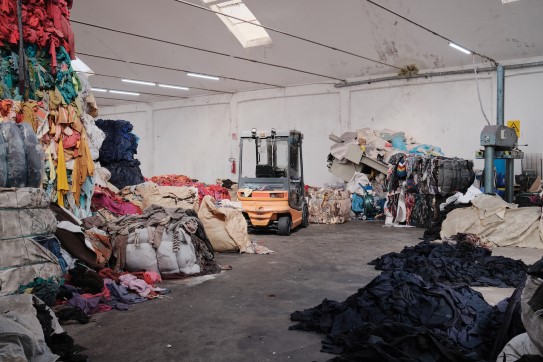Wool & Waste

Transcription
Narrator
Despite being a more sustainable material than many other textile fibres, wool often becomes waste, either pre-consumer or post-consumer.
Janne Arnesen
Pre-consumer wool waste is a consequence of the globalised wool market. Coarser fibres from other sheep breeds are not deemed commercially valuable. The wool that does not enter the textile supply chain is known as “neglected wool”.
Post-consumer wool waste on the other hand, comes mainly from clothing, but also from furniture, upholstery, or insulating materials.
Narrator
This is Janne Arnesen, art historian at the National Museum.
Janne Arnesen
In the European Union, wool that does not enter the textile supply chain has to be treated as a "special waste" of animal origin. Depending on the various translations of the document, however, it is not clear whether it has been categorised as waste or by-product, which makes a significant difference in the common perception of the material, and how it is treated afterwards.
Since wool, in Europe, has to be disposed of as “special waste”, it implies that shepherds have to sustain extra costs to get rid of it. This goes in addition to the costs of shearers, transportation, and management of wool...
New sheep breeds, such as Exlana, are available for those farmers who are not interested in selling wool. Implementing wool-shedding genetic traits in the flock can cut costs for the shepherd, as sheep are able to molt their fleece naturally.
Narrator
While the market share of recycled wool is quite low in the industry, there are some great examples in place…
Janne Arnesen
Prato, in Italy, for example, has a rich history of reusing and recycling wool waste.
Still today, some companies there are producing high quality garments from recycled wool.... and with time, and awareness, the sustainable fashion industry will hopefully expand further.